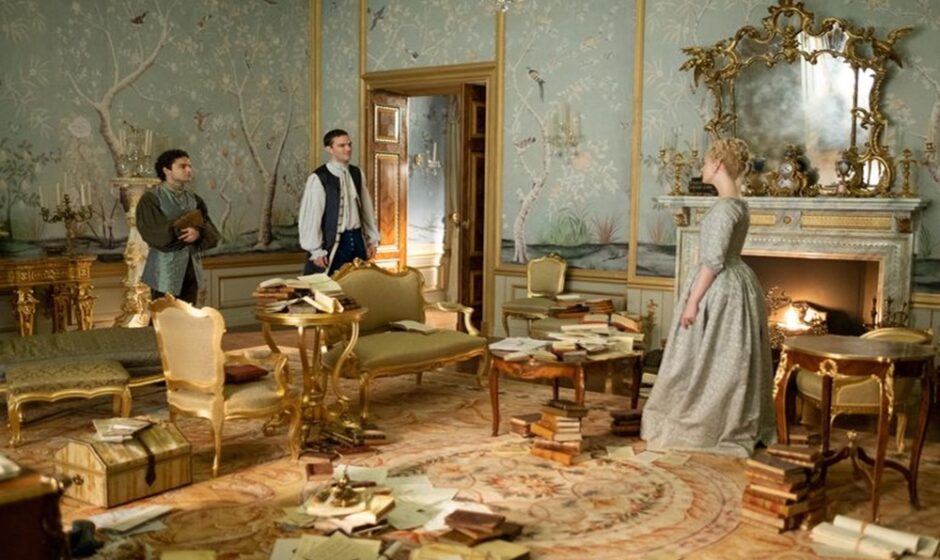When people talk about Russian royalty, they usually picture palaces covered in gold, chandeliers the size of small houses, and a whole lot of velvet. But the part I secretly geek out about? The furniture. Yep. Catherine the Great furniture is not just some old dusty chairs and tables—it’s like stepping inside her brain. Bold. Extravagant. And a little intimidating, honestly.
I mean, imagine walking into a room where the sofa has more carvings than your grandma’s wedding cake. That’s the vibe.
Catherine the Great and Her Obsession with Style
Catherine didn’t just wake up one day and say, “You know what, I’ll rule Russia AND design chairs.” She actually loved art and design so much that she turned it into part of her power game.
She wanted Russia to look “civilized” (her words, not mine), and furniture was a big part of that. Catherine the Great furniture pulled from French, Italian, and even a bit of German influence. If you’ve ever seen Louis XV–style pieces, with their curvy legs and floral details, you’ll get the picture.
Why Furniture Mattered So Much
- It showed status. The more elaborate the chair, the fancier you looked sitting in it.
- It gave Russia a “modern” European identity.
- It was a way of flexing wealth without saying a word.
Honestly, I still think about how wild it is that your furniture could announce your entire political agenda. My couch at home? Just announces that I eat chips while watching Netflix.
The Big Picture Look of Catherine the Great Furniture
So, what does Catherine the Great furniture actually look like? Well, grab a mental paintbrush, because this stuff is full-on dramatic.
- Gold leaf everywhere – Like a toddler went wild with glitter.
- Velvets, silks, and tapestries – No IKEA polyester allowed.
- Heavy wood frames – Mahogany, walnut, sometimes ebony.
- Greek and Roman vibes – Columns, laurel wreaths, classical gods carved right into your coffee table.
I once sat on an old armchair at a museum (don’t tell the guard, I’m pretty sure there was a sign), and let me just say—comfort wasn’t the priority. These pieces were made to impress, not to binge a TV show on.
The Different Phases of Catherine’s Style
She ruled for decades, so naturally Catherine the Great furniture didn’t stay the same all the way through.
Early Phase: Rococo Dreamland
At first, she loved Rococo. That’s the style that looks like a wedding cake exploded in your living room—lots of curves, light colors, pastel vibes. It’s playful and delicate.
Middle Phase: Going Neoclassical
Later, she got serious. Neoclassical style hit hard. Think straight lines, symmetry, marble touches, and statues of Apollo staring at you while you drink tea.
Late Phase: Heavy and Serious
By the end, the furniture became chunkier, darker, almost brooding. I always picture it like Catherine saying, “Enough of the party chairs, bring me something fit for a philosopher-queen.”
The Workshops Behind the Magic
What’s cool is Catherine didn’t just import everything. She set up her own imperial workshops in St. Petersburg. Imagine entire rooms filled with carvers, upholsterers, gilders, all making Catherine the Great furniture like their lives depended on it (which, in some cases, it kinda did).
I read once that she hired English craftsmen to come over and teach Russian workers the tricks. Sort of like an 18th-century version of a YouTube tutorial.
Palaces That Show It Off
If you’re ever lucky enough to wander through Russia (bucket list for me), you’ll find her furniture in places like:
- The Winter Palace – Absolute overload of gold and velvet.
- Tsarskoye Selo (Catherine Palace) – Blue walls, white trim, golden furniture everywhere. Looks like it belongs in a fairy tale…or a music video.
- Hermitage Museum – She basically founded it, and stuffed it with both art and furniture.
I once had a dream where I was sitting in one of her gilded armchairs trying to eat a slice of pizza. The armrest was so curvy, the slice just slid right off. Not practical.
Catherine the Great Furniture Up Close
Let’s break down some of the iconic types:
Thrones and Armchairs
These were like small castles for your butt. High backs, heavy gold frames, embroidered cushions. If you’ve ever sat on one, you’d feel like a boss—even if you’re just trying to tie your shoes.
Tables and Desks
She was a writer, so her desks mattered. Some of them had secret drawers, little compartments. Like a royal version of your messy junk drawer at home.
Beds
Four-posters with heavy drapes. These weren’t just for sleeping—they were a whole stage set. Imagine having to climb into bed like you’re entering a royal carriage.
Why People Still Care
So why does Catherine the Great furniture still fascinate people today?
- It’s art history you can touch (well, not literally—museum guards hate that).
- It reflects politics, power, and personality all in one.
- Designers still copy the shapes and patterns for modern luxury interiors.
I once saw a modern chair inspired by Catherine’s Rococo style, but instead of velvet, it had neon pink leather. Honestly? Catherine might’ve loved it.
The Quirky Side of It All
Here’s something funny: Catherine supposedly once ordered a commode (that’s a fancy chest of drawers, not a toilet…though confusing, right?) with so many gilded details, it weighed more than three grown men. Imagine trying to move that thing across the palace.
Another odd fact—she loved having mythological carvings on her furniture. So somewhere, there’s a gilded side table with Hercules just casually holding up the corner like a gym bro doing squats.
My Personal Connection (Sort of)
I don’t have Catherine the Great furniture, obviously. My living room is more “yard sale chic.” But when I was a kid, my grandmother had this heavy, carved wooden wardrobe. It squeaked every time you opened it, and inside smelled like mothballs and mystery. I used to imagine it was some kind of Russian relic, smuggled out of a palace. Spoiler: it wasn’t. Just a Sears special. But the vibe stuck with me.
Wrote this paragraph by hand. Then spilled coffee on it. Classic.
How Catherine’s Furniture Differs from Other Royals
If you compare Catherine the Great furniture to, say, French or English styles:
- French – Playful, light, flirtatious.
- English – More restrained, practical, less glitter.
- Russian under Catherine – A mash-up, but always turned up a notch. It’s like she took French elegance and then said, “More gold. No, more than that.”
Honestly, if Catherine had Instagram, her interior posts would break the internet. #RoyalChic
The Legacy Lives On
Even today, interior designers talk about her as an inspiration. Luxury hotels sometimes copy the vibe: gold trim, velvet cushions, chandeliers the size of small planets.
I once stayed in a hotel that tried this look. My chair had so many curves I couldn’t figure out how to sit on it without sliding off. Felt kinda weird, but hey, it looked fancy.
Quick Cheat Sheet of Catherine the Great Furniture Traits
- Gold everywhere—frames, trim, even table legs.
- Fabrics that scream wealth—silk, velvet, damask.
- Classical motifs—Greek gods, Roman columns.
- Furniture as power symbols—every piece had a purpose.
- A mix of Rococo playfulness and Neoclassical seriousness.
Final Thoughts
Catherine the Great furniture wasn’t just furniture. It was a lifestyle, a statement, a royal mic drop. Every chair, every table told you exactly who was in charge.
Me? I’ll stick with my wobbly desk and thrift store couch. But sometimes I look at photos of those gilded armchairs and think… maybe one day. And then I remember I can’t even afford a coffee table without uneven legs.
Still, her furniture remains one of the most fascinating parts of her reign. It wasn’t just about luxury. It was about shaping an empire’s identity—one gilded chair at a time.


